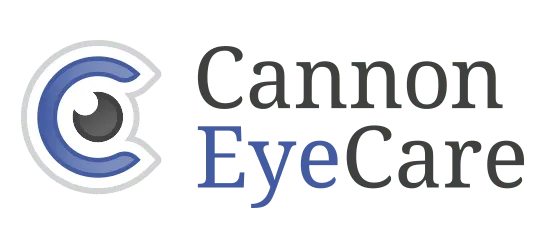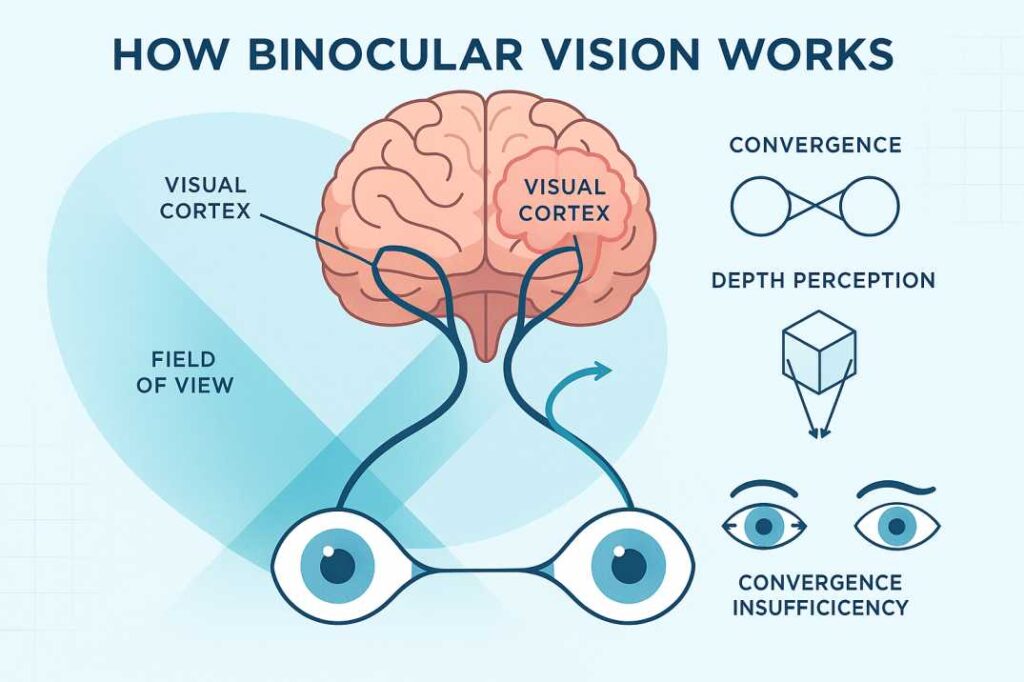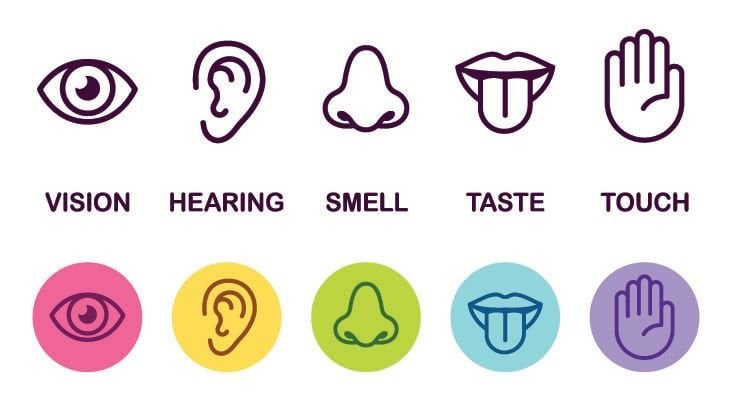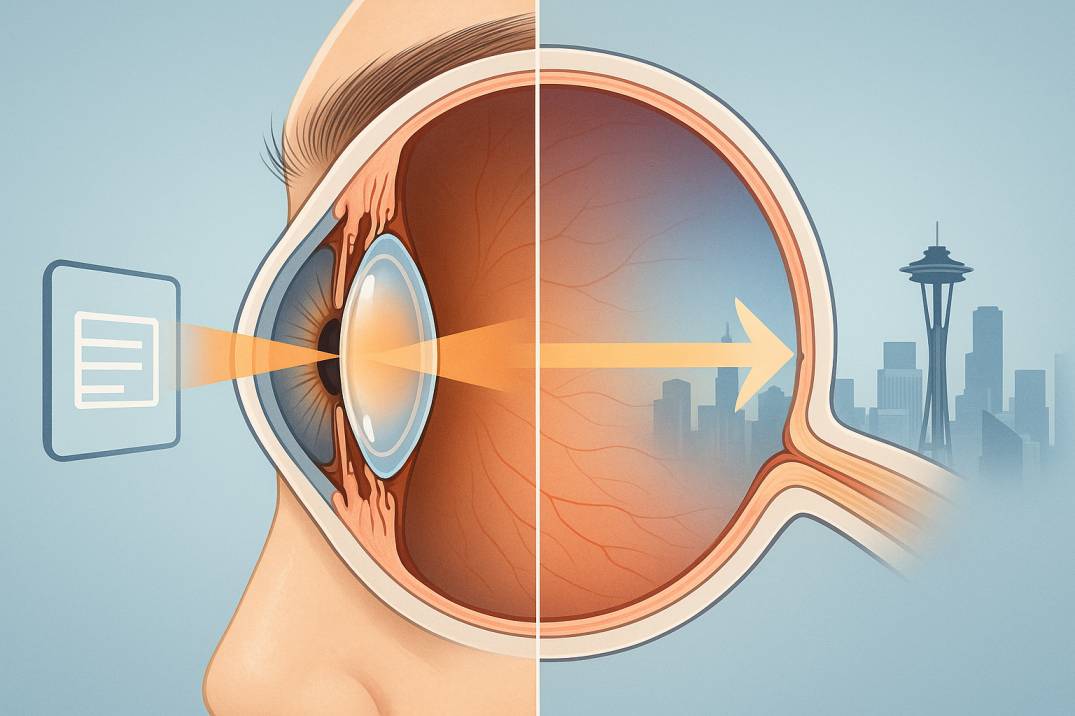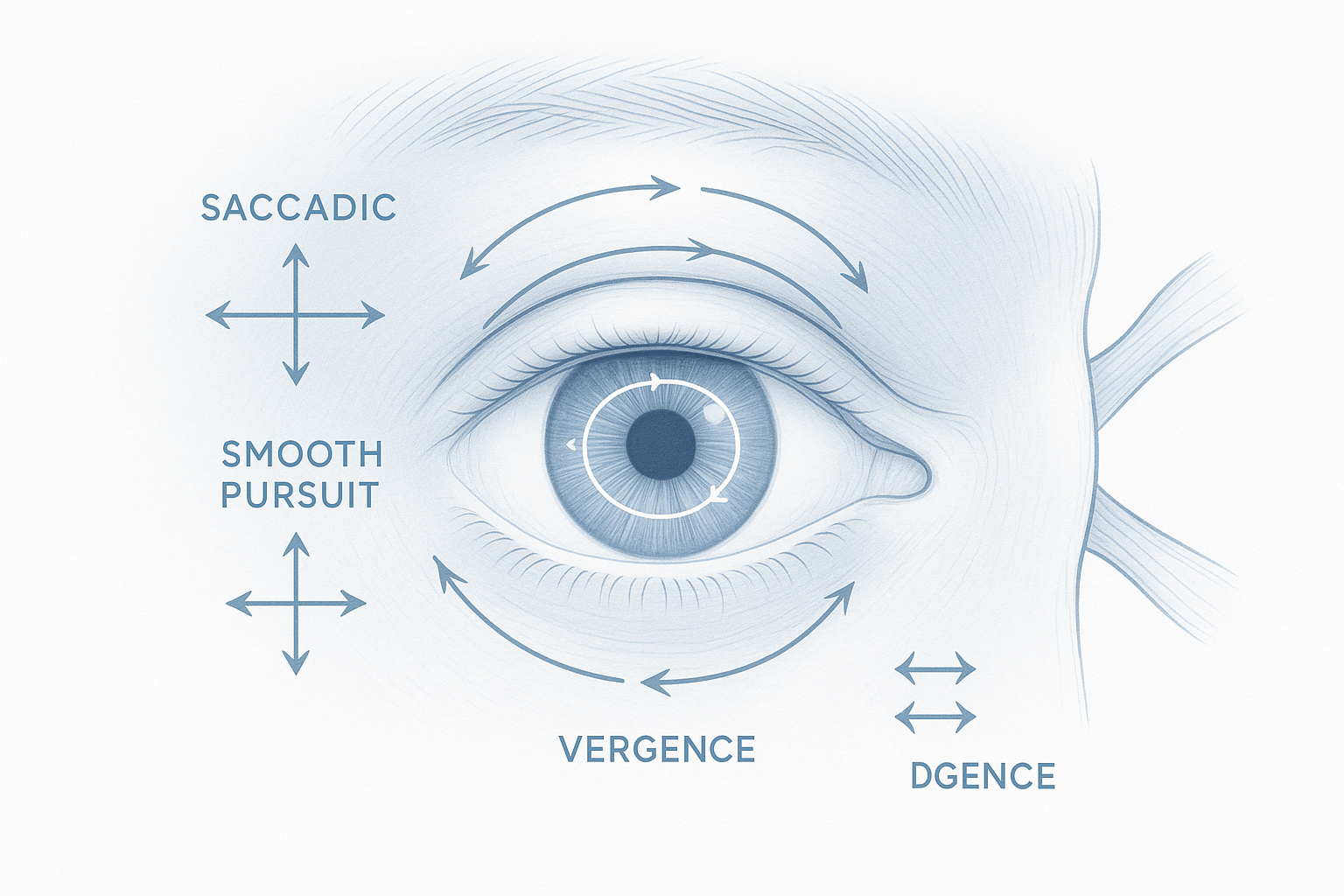Binocular Vision: Your Seattle Eye Advantage
Bottom Line Up Front: Seattle residents have unparalleled access to advanced binocular vision care that can transform daily life—from reducing tech-worker eye strain to improving children’s reading performance. Understanding binocular vision and leveraging Seattle’s specialized expertise provides distinct advantages for lifelong visual health and professional success.
Introduction: Why Binocular Vision Matters More Than Ever in Seattle
In Seattle’s tech-driven environment, where professionals spend countless hours on screens and students navigate increasingly digital classrooms, binocular vision—the ability of your two eyes to work together as a coordinated team—has become more critical than ever. While many people focus solely on visual acuity (that famous 20/20 measurement), true visual health requires sophisticated coordination between both eyes to create depth perception, reduce eye strain, and support optimal performance in our modern world.
Binocular vision enables depth perception by merging input from both eyes into a single 3D image, making it essential for everything from navigating Seattle’s steep hills to excelling in demanding careers at companies like Amazon and Microsoft. When this system functions properly, it provides seamless visual experiences. When it doesn’t, the consequences can significantly impact quality of life, academic performance, and professional productivity.
What is Binocular Vision and How Does It Work?
Binocular vision is the remarkable ability of the human visual system to merge visual inputs from both eyes into a single, coherent three-dimensional image. This process involves:
- Overlapping Fields of View: Each eye captures slightly different images of the same scene
- Neural Processing: Visual information travels through the optic nerves to the brain’s occipital lobe
- Image Synthesis: The brain merges dual perspectives into unified 3D vision
- Depth Perception: Differences between eye inputs create stereopsis (depth perception)
Unlike many animals whose eyes are positioned on the sides of their heads, humans have forward-facing eyes that create overlapping fields of view. This configuration allows for sophisticated depth perception and spatial awareness that proves essential for countless daily activities in Seattle’s urban environment.
The process begins when each eye captures slightly different images of the same scene. These dual perspectives travel through the optic nerves to the visual cortex in the brain’s occipital lobe, where complex neurological processing synthesizes them into one unified image. This synthesis creates stereopsis—the technical term for three-dimensional depth perception—which allows us to judge distances, navigate spaces safely, and perform intricate tasks requiring hand-eye coordination.
Critical Development Windows
Binocular vision develops gradually during early childhood through a series of critical stages. From birth to four months, infants begin tracking moving objects but lack coordinated eye movements. Between five and eight months, depth perception emerges as the eyes start working together. The period from one to seven years represents the most crucial window for refining stereopsis, when neural plasticity allows the brain to adapt and establish permanent visual pathways.
During this critical period, any disruption to normal binocular development can have lasting consequences. This is why pediatric eye exams at six months, three years, and before kindergarten are recommended by the American Association for Pediatric Ophthalmology and Strabismus (AAPOS). Early detection and intervention during these developmental windows can prevent permanent vision deficits and ensure optimal visual function throughout life.
Common Binocular Vision Disorders: Beyond the Basics
Well-Known Conditions
Strabismus (Eye Misalignment): When eyes fail to align properly, with one eye drifting from its normal position, the brain struggles to synthesize visual images from each eye. This misalignment disrupts binocular vision and impairs depth perception, making tasks like driving or sports participation challenging.
Amblyopia (Lazy Eye): This condition occurs when the brain ignores input from one eye to avoid conflicting visual information. While the suppressed eye may appear healthy, the brain’s preference for the dominant eye leads to reduced visual development and compromised binocular function.
Underdiagnosed Conditions
Convergence Insufficiency: Affecting 5-13% of school-aged children according to NIH studies, this condition causes the eyes to struggle when focusing on near objects. Symptoms include eye strain, blurred vision when reading, and headaches—particularly relevant for Seattle students and tech workers who spend extensive time on close-up tasks.
Divergence Excess: Characterized by overactive outward eye movement, this condition leads to double vision and difficulty focusing on distant objects like whiteboards or highway signs. The brain often compensates by suppressing input from one eye, reducing depth perception and spatial awareness.
Accommodative Dysfunction: Problems with the eye’s focusing mechanism can cause fatigue during sustained near work, making it particularly problematic for Seattle’s knowledge workers who rely heavily on computer-based tasks.
The Seattle Advantage: Technology, Terrain, and Treatment
Unique Environmental Challenges
Seattle’s distinctive environment creates specific visual demands that make binocular vision particularly important. The city’s frequent overcast skies reduce natural lighting, potentially exacerbating eye strain and focusing difficulties. Seattle’s dramatic topography—with its steep hills and varying elevations—requires excellent depth perception for safe navigation, whether walking downtown or driving through neighborhoods like Queen Anne or Capitol Hill.
The region’s tech-heavy economy means many residents spend 8-12 hours daily on digital devices, creating unprecedented demands on the visual system. This “Seattle Screen Syndrome,” as local eye care specialists have termed it, can trigger or worsen binocular vision dysfunction, particularly convergence insufficiency and accommodative dysfunction.
Advanced Diagnostic and Treatment Options
Seattle residents benefit from access to cutting-edge binocular vision assessment and treatment technologies not available in many other cities. Local practitioners utilize specialized diagnostic tools, including:
Synoptophores measure eye alignment and fusion ability with precision, allowing for targeted treatment planning. Prism bars quantify misalignment severity to determine optimal corrective lens prescriptions. Advanced stereopsis testing using tools like the Randot and Titmus Fly tests provides a detailed assessment of three-dimensional vision capabilities.
Treatment options in Seattle include state-of-the-art vision therapy programs that incorporate virtual reality technology, specialized computer programs, and interactive games designed to retrain the brain-eye connection. These neuroplasticity-based approaches can effectively restore visual coordination without surgical intervention in many cases.
Impact on Daily Life and Professional Performance
Academic and Learning Implications
For Seattle’s students, undiagnosed binocular vision problems can masquerade as learning disabilities or attention disorders. Children with convergence insufficiency may struggle with reading comprehension, frequently lose their place in text, or experience headaches during homework sessions. These symptoms often lead to misdiagnoses of ADHD or dyslexia when the root cause is actually a treatable vision coordination problem.
Research demonstrates that addressing binocular vision dysfunction can significantly improve reading speed, comprehension, and sustained attention to visual tasks. Students who receive appropriate treatment often show marked improvement in academic performance and reduced resistance to reading and studying.
Professional Performance in Tech Careers
Seattle’s technology workforce faces unique visual demands that make optimal binocular vision crucial for career success. Software developers, data analysts, and UX designers rely on precise visual coordination for tasks requiring sustained near focus, rapid eye movements between multiple screens, and accurate depth perception for interface design.
Untreated binocular vision dysfunction can lead to decreased productivity, increased error rates, and chronic eye strain that impacts overall job satisfaction and performance. Conversely, employees with optimally functioning binocular vision report improved focus, reduced fatigue, and enhanced ability to work efficiently across multiple monitors.
Sports and Recreation Benefits
Seattle’s active outdoor culture—from hiking in the Cascades to sailing on Puget Sound—requires excellent depth perception and eye coordination. Binocular vision disorders can impair athletic performance, affect balance during activities like skiing or rock climbing, and reduce the enjoyment of recreational pursuits that depend on accurate spatial judgment.
Modern Treatment Approaches and Their Effectiveness
Vision Therapy: Retraining the Visual System
Vision therapy represents the gold standard for treating many binocular vision disorders. This personalized, doctor-supervised program enhances how the eyes and brain process visual information through structured exercises and activities. Unlike glasses or contact lenses that simply correct refractive errors, vision therapy addresses the underlying coordination and processing issues that cause binocular dysfunction.
Modern vision therapy programs in Seattle incorporate advanced technologies, including virtual reality systems, computer-based exercises, and specialized optical devices. These tools provide engaging, game-like experiences while systematically retraining the visual system to function more efficiently.
Research published in optometry journals demonstrates that 89% of patients with binocular disorders achieve lasting results within 3-6 months of structured vision therapy programs. The treatment’s effectiveness stems from neuroplasticity—the brain’s ability to form new neural pathways and adapt to improved visual input patterns.
Prismatic Correction and Specialized Lenses
For certain binocular vision disorders, specially designed prism lenses can provide immediate relief by redirecting light to reduce double vision and eye strain. These therapeutic lenses work by altering the path of light entering the eyes, helping to align images and reduce the effort required for binocular fusion.
Seattle eye care providers also offer computer-specific glasses designed to reduce digital eye strain and support healthy binocular function during extended screen use. These specialized lenses may incorporate blue light filtering, anti-reflective coatings, and subtle focusing assistance optimized for computer working distances.
Surgical Interventions When Necessary
While many binocular vision disorders respond well to non-surgical treatments, some cases require surgical intervention. Modern strabismus surgery has become increasingly precise, with improved outcomes and reduced recovery times. However, surgery is typically considered only after exploring comprehensive vision therapy options, as many conditions can be successfully managed through retraining approaches.
Prevention Strategies for the Digital Age
Screen Hygiene and Environmental Modifications
Seattle’s screen-heavy lifestyle makes preventive measures particularly important for maintaining healthy binocular vision. The 20-20-20 rule—looking at something 20 feet away for 20 seconds every 20 minutes—helps reduce accommodation fatigue and supports natural binocular coordination.
Proper workspace ergonomics, including optimal screen positioning, adequate lighting, and regular break schedules, can prevent the development of binocular vision problems and reduce symptoms in those already affected. Many Seattle employers are incorporating these principles into their wellness programs, recognizing the connection between visual health and productivity.
Early Detection Through Regular Examinations
Comprehensive eye examinations that include binocular vision assessment are essential for early detection of developing problems. Unlike basic vision screenings that focus primarily on visual acuity, thorough binocular evaluations assess eye coordination, focusing flexibility, and depth perception.
Seattle residents have access to specialized binocular vision clinics that offer comprehensive assessments using advanced diagnostic equipment. These evaluations can identify subtle dysfunction before symptoms become severe, allowing for more effective and less intensive treatment interventions.
Recent Scientific Developments
Neuroplasticity Research Advances
Recent studies published in major vision science journals have revolutionized the understanding of the brain’s capacity for visual adaptation. Research from MIT’s Picower Institute for Learning and Memory revealed that during critical developmental periods, only 40% of neural connections involved in binocular vision survive the refinement process, with extensive rewiring required to establish proper eye coordination.
This research has significant implications for treatment approaches, confirming that neuroplasticity-based interventions can be effective well beyond traditional “critical periods.” Adults who were previously considered untreatable for certain binocular vision disorders can now benefit from targeted therapy programs that leverage the brain’s inherent adaptability.
Technology Integration in Treatment
Emerging technologies are transforming binocular vision treatment approaches. Virtual reality systems specifically designed for vision therapy can provide controlled, immersive environments for retraining eye coordination. These systems offer advantages over traditional therapy methods by allowing precise control of visual stimuli and providing engaging, game-like experiences that improve patient compliance.
Mobile applications and computer-based training programs are making vision therapy more accessible and convenient for Seattle’s busy professionals and students. These tools allow for supervised home-based therapy sessions that complement in-office treatment, accelerating progress and improving outcomes.
Improved Diagnostic Capabilities
Advanced diagnostic technologies are enabling earlier and more precise identification of binocular vision disorders. High-resolution eye tracking systems can detect subtle coordination problems that might be missed in traditional examinations. Computerized assessment tools provide objective measurements of binocular function, allowing for more accurate treatment planning and progress monitoring.
The Economic Impact of Untreated Binocular Vision Disorders
Healthcare Costs and Misdiagnosis
Untreated binocular vision dysfunction often leads to expensive diagnostic workups for symptoms that mimic other conditions. Patients may undergo extensive testing for migraines, balance disorders, or neurological conditions before the visual cause is identified. Early identification and treatment of binocular vision problems can prevent unnecessary medical expenses and reduce the personal cost of chronic symptoms.
Educational and Professional Implications
Children with undiagnosed binocular vision disorders may require special education services, tutoring, or other academic supports that could be unnecessary with appropriate vision treatment. Similarly, adults may experience reduced career advancement opportunities due to symptoms that impact work performance and productivity.
The economic benefits of optimal binocular vision extend beyond individual health outcomes to include reduced healthcare utilization, improved academic performance, and enhanced professional productivity—investing in binocular vision care is a sound decision for both personal and societal well-being.
Choosing the Right Care Provider in Seattle
Qualifications and Specializations
When seeking binocular vision care in Seattle, it’s important to work with providers who have specialized training in this complex area. Look for optometrists who are Fellows of the College of Optometrists in Vision Development (FCOVD) or who have completed residencies in pediatric optometry, vision therapy, or binocular vision disorders.
Many Seattle-area providers have additional certifications in areas like neuro-optometric rehabilitation, making them particularly qualified to address binocular vision problems related to traumatic brain injury or neurological conditions.
Treatment Philosophy and Approach
The most effective binocular vision care combines thorough diagnostic assessment with personalized treatment planning. Providers should offer comprehensive evaluations that go beyond basic vision screening to assess eye coordination, focusing flexibility, and visual processing capabilities.
Look for practitioners who emphasize evidence-based treatment approaches and who can explain how specific interventions address your particular visual challenges. The best providers will work collaboratively with you to develop realistic treatment goals and provide ongoing support throughout the improvement process.
Future Directions in Binocular Vision Care
Personalized Medicine Approaches
The future of binocular vision treatment is moving toward increasingly personalized interventions based on individual neurological and genetic factors. Research into biomarkers that predict treatment response may allow for more targeted therapy selection and improved outcomes.
Advanced brain imaging techniques are providing new insights into the neural mechanisms underlying binocular vision disorders, potentially leading to more effective treatment approaches and a better understanding of individual variation in treatment response.
Integration with Overall Health Management
Recognition of the connections between vision and overall health is growing, with binocular vision assessment becoming part of comprehensive wellness programs. This integration acknowledges that optimal visual function contributes to balance, coordination, cognitive performance, and quality of life.
Seattle’s progressive healthcare environment is well-positioned to lead in implementing these integrated approaches, offering residents comprehensive vision care that addresses both immediate symptoms and long-term visual health maintenance. Cannon EyeCare exemplifies this integrated model through its comprehensive health screening approach, which combines binocular vision assessment with specialized dry eye treatment at its University Village and Pike Place Market locations. This holistic approach ensures that patients receive coordinated care addressing all aspects of visual health rather than fragmented treatment of individual symptoms.
Scientific Research and Evidence-Based Resources
This article draws from peer-reviewed research and authoritative sources to provide accurate, evidence-based information about binocular vision care. Below are three key resources that support the clinical findings and treatment recommendations discussed:
1. MIT Picower Institute Neuroplasticity Research (2024)
Source: Tsimring, K., et al. “Connect or reject: Extensive rewiring builds binocular vision in the brain.” Nature Communications, 2024.
Link: https://picower.mit.edu/news/connect-or-reject-extensive-rewiring-builds-binocular-vision-brain
Key Finding: This groundbreaking study revealed that during binocular vision development, only 40% of neural connections survive the refinement process, with extensive synaptic rewiring required to establish proper eye coordination. This research demonstrates the brain’s remarkable capacity for visual adaptation and supports the neuroplasticity-based approach used in modern vision therapy programs.
Clinical Relevance: Understanding the neural mechanisms underlying binocular vision development helps explain why vision therapy can be effective even in adults, as the visual system retains more plasticity than previously believed.
2. Convergence Insufficiency Prevalence Study (2022)
Source: Carla, S.C., et al. “Prevalence of convergence insufficiency among Spanish school children aged 6 to 14 years.” Journal of Optometry, Vol. 15, Issue 4, 2022, pages 278-283.
Link: https://www.journalofoptometry.org/en-prevalence-convergence-insufficiency-among-spanish-articulo-S1888429621000893
Key Finding: This comprehensive study of 628 school children found a convergence insufficiency prevalence of 5.30% using strict diagnostic criteria, with an additional 23.76% showing one or more signs of the condition. The research provides current, reliable data on one of the most common binocular vision disorders.
Clinical Relevance: These findings help parents and educators understand that binocular vision problems are relatively common and emphasize the importance of comprehensive eye examinations for school-aged children, particularly those experiencing reading difficulties or eye strain.
3. Digital Eye Strain Comprehensive Review (2022)
Source: Kaur, K., et al. “Digital eye strain – a comprehensive review.” Ophthalmology and Therapy, Vol. 11, 2022, pages 1655-1680.
Link: https://www.ncbi.nlm.nih.gov/pmc/articles/PMC9434525/
Key Finding: This extensive review documented digital eye strain prevalence ranging from 50-70% among computer users, with the COVID-19 pandemic significantly increasing screen time and associated symptoms. The study identified binocular vision dysfunction as a key contributing factor to the symptoms of digital eye strain.
Clinical Relevance: This research is particularly relevant for Seattle’s tech-heavy workforce, as it demonstrates the connection between prolonged screen use and binocular vision problems, and supports the need for specialized treatment approaches that address both digital eye strain and underlying binocular dysfunction.
Conclusion: Maximizing Your Seattle Eye Advantage
Seattle residents possess unique advantages in accessing world-class binocular vision care that can significantly enhance daily life, academic performance, and professional success. The city’s concentration of advanced eye care providers, cutting-edge diagnostic and treatment technologies, and research institutions creates an exceptional environment for addressing binocular vision challenges.
Whether you’re a tech professional struggling with digital eye strain, a parent concerned about your child’s reading difficulties, or an active individual seeking to optimize visual performance for sports and recreation, Seattle’s binocular vision specialists offer evidence-based solutions tailored to your specific needs.
The investment in comprehensive binocular vision assessment and treatment pays dividends in improved quality of life, enhanced productivity, and reduced risk of long-term visual complications. With Seattle’s unparalleled resources and expertise at your disposal, there’s never been a better time to ensure your visual system is functioning at its optimal level.
Don’t let undiagnosed binocular vision dysfunction limit your potential. Take advantage of Seattle’s exceptional eye care resources to unlock the full benefits of healthy, coordinated vision that will serve you throughout your life.
Key Takeaways
- Early intervention is crucial: Binocular vision problems are most effectively treated when caught early, particularly during childhood developmental windows.
- Technology creates new challenges: Seattle’s screen-heavy lifestyle requires proactive vision care to prevent and address digital eye strain.
- Treatment options are expanding: Modern approaches like vision therapy and specialized lenses offer effective alternatives to surgery for many conditions.
- Professional benefits are significant: Optimal binocular vision can enhance career performance, particularly in technology and knowledge work.
- Seattle offers unique advantages: Access to specialized providers, advanced technologies, and research-based treatments makes Seattle an ideal location for binocular vision care.
FAQs
-
Binocular vision dysfunction occurs when your eyes struggle to work together properly, causing headaches, dizziness, eye strain, anxiety in crowded spaces, and difficulty reading.
-
Common signs include double vision, poor depth perception, headaches after reading, neck pain, motion sickness, anxiety in large spaces like malls, and difficulty concentrating.
-
BVD can result from:
-
One eye is positioned slightly higher than the other
-
Eye muscle abnormalities are present from birth
-
Stroke, concussion, or brain injury
-
Inner ear problems or neurological disorders
-
-
Yes, most BVD cases are successfully treated with specialized microprism glasses that realign images between your eyes, eliminating the need for eye muscle surgery.
-
Many patients notice immediate improvement when trying microprism glasses during their first visit, with 50% symptom reduction typically achieved by the end of the initial appointment.
-
Vision therapy can be effective for certain binocular vision conditions, particularly convergence insufficiency, though microprism glasses are often more efficient for most BVD cases.
-
Treatment costs vary significantly, with traditional vision therapy ranging from $1,000-$12,000 for 6+ months, while online therapy options are available for approximately $100 monthly.
-
Yes, children of all ages can experience BVD, though symptoms may manifest differently than in adults, sometimes being misdiagnosed as ADHD or dyslexia.
-
Coverage varies by insurance provider and specific treatment type; consult your insurance company about coverage for specialized eye exams and microprism lenses.
-
While professional evaluation is essential, some patients use supplemental exercises like Brock string training, though microprism glasses remain the most effective treatment.
-
Yes, BVD commonly causes anxiety-like symptoms, particularly in crowded spaces or large stores, as your brain struggles to process misaligned visual information.
-
Diagnosis involves specialized questionnaires, detailed health history, comprehensive eye exams, and neuro-visual evaluations to detect eye misalignment, typically taking 1.5 hours.
